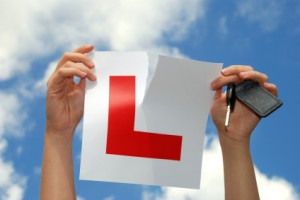If you look at almost any road traffic incident statistics, you’ll see that novice drivers, who also tend to be younger drivers, are far more likely to be involved in incidents. Indeed, of all fatalities from road traffic incidents in 2009, there were almost twice the number of causalities in the 16-25 years old age group than any other. Additionally, 25% of fatalities occurred as a result of incidents involving young drivers.
 Although these statistics may be alarming, it’s also important to note that the number of incidents and fatalities within this age group has halved over the past 10-15 years. This means that these incidents are preventable and avoidable, probably through a mixture of improved safety features in cars and an improved understanding of how people learn to drive, which in turn leads to more effective training.
Although these statistics may be alarming, it’s also important to note that the number of incidents and fatalities within this age group has halved over the past 10-15 years. This means that these incidents are preventable and avoidable, probably through a mixture of improved safety features in cars and an improved understanding of how people learn to drive, which in turn leads to more effective training.
So how are the driving behaviours of novice drivers different to the driving behaviours of experienced drivers and how can their skills be developed and improved to avoid risks?
A recent study, conducted by a team of researchers at the University of Rome, examined driving behaviours in novice drivers. They asked more than a thousand drivers aged 18-23 years old to complete a number of different questionnaires which asked about driving habits, attitudes towards driving and personality traits. They then analysed these questionnaire responses to identify different groups of novice drivers and found that there were three different “types” of new drivers:
Risky drivers
About 34% of drivers were categorised as ‘risky’, were more likely to be males and tended to spend more time driving each week. They were also more likely to have negative attitudes towards driving rules, so they were more likely to believe that speeding or drink driving are acceptable. Risky drivers also reported more driving problems in terms of violations, lapses and errors; however they were only slightly more likely to have been involved in an incident or to have been given a ticket.
Worried drivers
Around 28% of novice drivers were worried drivers, with a higher proportion likely to be females. These drivers have the highest scores on traffic risk perception tests, tend to view speeding and drink driving negatively and are less likely to make driving errors. Worried drivers also have lower levels of driving anger, but higher levels of driving anxiety than risky drivers.
Careful drivers
The third type of novice driver is the careful driver. These make up about 38% of novice drivers and are equally likely to be male or female. Careful drivers are significantly less prone to driving errors than both risky and worried drivers, and they are less likely to have been involved in a crash. However, careful drivers also spend significantly less time driving. They also have lower levels of driving anger than both risky and worried drivers and lower levels of anxiety than worried drivers, but higher levels of anxiety than risky drivers.
A consistent finding across all three types of new driver is that they have strong emotional responses to driving, whether that’s high levels of anger or high levels of anxiety. On the basis of this finding, the researchers suggested that the most effective training for new drivers will involve guidance on how to deal and cope with these emotional responses. Both anger and anxiety can increase the chances of driving errors which can result in an incident.
One important point to remember is that a “new” driver isn’t necessarily a “bad” driver. Drivers of all ages and with wide ranging levels of experience benefit from ongoing training to develop and improve their driving skills, knowledge and behaviour. With new drivers, they may just need a slightly different kind of support and training. By identifying the kind of new driver that they are, and the areas in which they can be supported and provided with appropriate training, anyone has the potential to be a safe and effective driver.
Dr Victoria Bourne (BA Hons, DPhil)
Consultant to Driving Risk Management Limited